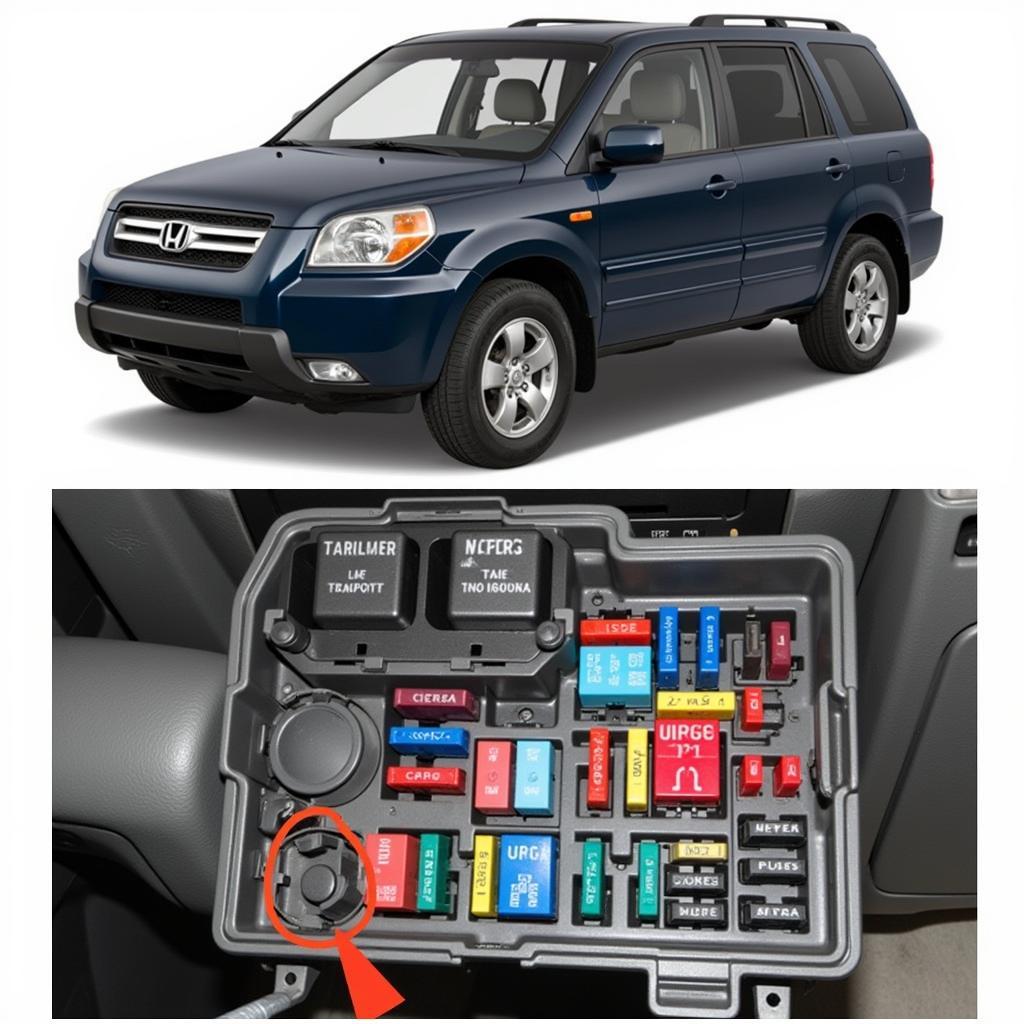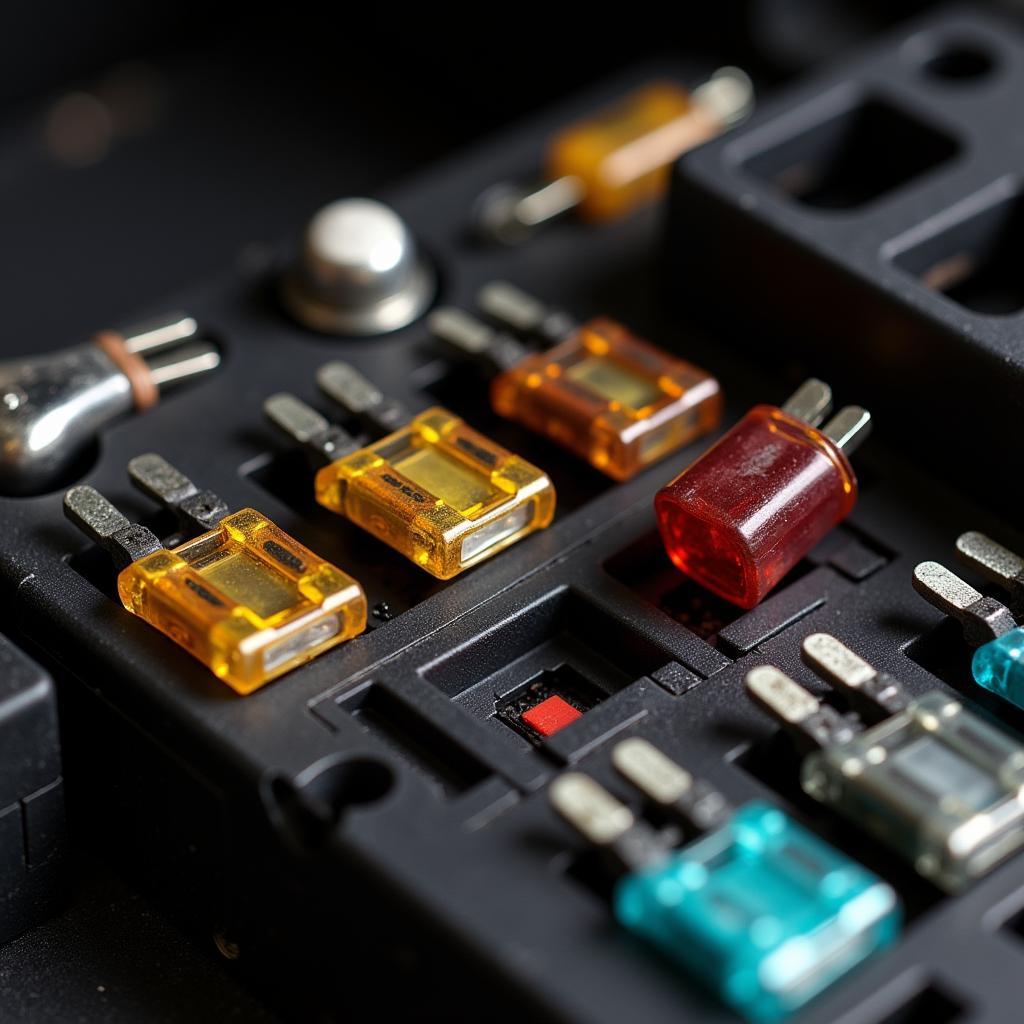The brake lamp warning light on your Honda Pilot’s dashboard is a crucial safety feature. When illuminated, it signals a problem with your vehicle’s braking system that requires immediate attention. Ignoring this warning light can compromise your safety and the safety of others on the road.
This comprehensive guide explores the common causes behind a Honda Pilot brake lamp warning light and provides potential solutions to help you get back on the road safely.
Common Causes of a Honda Pilot Brake Lamp Warning Light
Several factors can trigger the brake lamp warning light in your Honda Pilot. These range from simple issues like a blown fuse to more complex problems requiring professional attention. Here are some of the most common culprits:
1. Burnt Out Brake Light Bulb
One of the most straightforward explanations for the warning light is a burnt-out brake light bulb. Much like other bulbs in your vehicle, brake light bulbs have a limited lifespan and can burn out over time.
2. Blown Fuse
The brake light system in your Honda Pilot relies on a fuse to protect its electrical circuit. A sudden surge in electrical current, often due to a short circuit or wiring issue, can cause the fuse to blow. A blown fuse interrupts the flow of electricity, preventing the brake lights from receiving power.
3. Faulty Brake Light Switch
The brake light switch, typically located near the brake pedal, plays a critical role in activating your brake lights. When you press the brake pedal, the switch closes, completing the electrical circuit and illuminating the brake lights. A faulty brake light switch might not close properly, leading to the brake lights not functioning correctly.
4. Wiring Problems
The electrical wiring that connects various components of your Honda Pilot’s brake light system can deteriorate or become damaged over time. Exposure to heat, moisture, road debris, or rodents can cause the wiring insulation to wear down, leading to short circuits or open circuits that disrupt the brake light functionality.
5. Brake Fluid Issues
While less common, low brake fluid levels or contaminated brake fluid can also trigger the brake lamp warning light. The brake system relies on hydraulic pressure to function properly. When the brake fluid level drops too low, often due to a leak, it can compromise the system’s ability to generate sufficient pressure, potentially leading to brake failure.
Troubleshooting a Honda Pilot Brake Lamp Warning Light
Before heading to a mechanic, you can perform some basic troubleshooting steps to identify the root cause of the problem:
-
Check the Brake Light Bulbs: Begin by visually inspecting all brake light bulbs. If you find a burnt-out bulb, replace it with a new one of the appropriate type and wattage.
-
Inspect the Fuses: Consult your Honda Pilot’s owner’s manual to locate the fuse box and identify the fuse associated with the brake lights. Using a fuse tester or visually inspecting the fuse can determine if it needs replacement.
 Honda Pilot Fuse Box Location
Honda Pilot Fuse Box Location
- Examine the Brake Fluid: Check the brake fluid level in the reservoir under the hood. If the fluid level is low, add the recommended brake fluid to the reservoir. Be sure to use the correct type of brake fluid specified in your owner’s manual.
When to Seek Professional Help
If your troubleshooting efforts don’t resolve the issue, or if you suspect a more complex problem like a faulty brake light switch or wiring issues, it’s crucial to seek professional help. Attempting to fix these issues yourself without the proper knowledge and tools can be dangerous and could worsen the problem.
A qualified mechanic can accurately diagnose the problem using advanced diagnostic equipment and recommend the most effective repair solution. They can also safely address any issues with the brake light switch, wiring, or other components of the brake system.
Preventing Future Brake Lamp Warning Light Issues
Regular maintenance is key to preventing future problems with your Honda Pilot’s brake light system. Here are some preventative measures to consider:
-
Regularly inspect your brake lights: Make it a habit to visually check your brake lights periodically to ensure all bulbs are functioning correctly.
-
Schedule routine brake inspections: Adhere to your Honda Pilot’s recommended maintenance schedule for brake inspections. During these inspections, a qualified mechanic will inspect the entire brake system, including the brake lights, for any signs of wear and tear or potential problems.
-
Address brake fluid leaks promptly: If you notice any signs of a brake fluid leak, such as puddles of fluid under your vehicle or a consistently low brake fluid level, have it addressed by a professional immediately.
Conclusion
The brake lamp warning light in your Honda Pilot is a crucial safety feature that should never be ignored. Addressing the underlying cause of the warning light promptly helps ensure your safety and the safety of others on the road.
By understanding the common causes behind a Honda Pilot brake lamp warning light and following the troubleshooting tips and preventative measures outlined in this guide, you can maintain a safe and reliable driving experience.
Remember, when in doubt, always consult with a qualified mechanic for expert diagnosis and repair.

